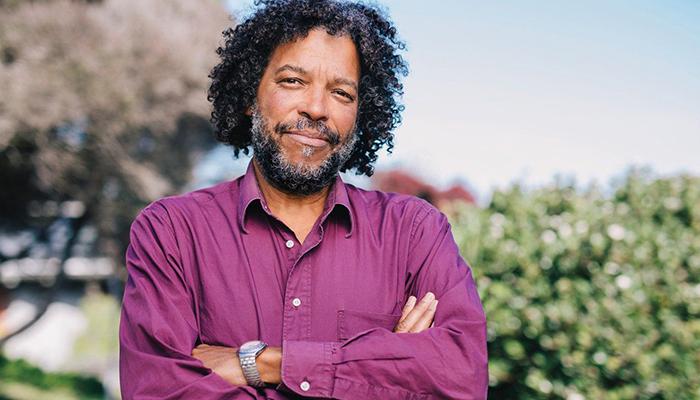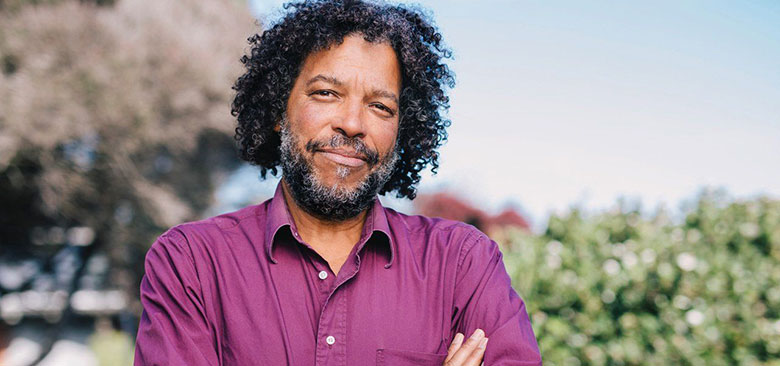

Sociologist Howard Pinderhughes, PhD, has devoted his career to understanding racism, preventing youth violence, and creating healthy communities for all. Now, the professor of social and behavioral sciences in the School of Nursing is leading an effort to leverage UCSF’s economic power to transform San Francisco’s poorest and most vulnerable communities.
In 2050, what will stand in the way of good health for all San Franciscans?
Housing, economic opportunity, and educational equity. We need quality housing, not substandard housing that makes people sick. We need meaningful jobs at wages that allow workers to support themselves and their families. We need equitable education for everyone, not only to create productive members of society but also to generate responsible, conscientious citizens of a diverse Bay Area.
You didn’t mention health care. Why not?
To improve the health of the entire population, we need to widen our focus. We need to improve health equity.
For example, people living in Bayview-Hunters Point, East and West Oakland, and the Iron Triangle in Richmond have poor health outcomes due in part to environmental injustice; the lack of quality, affordable housing; and limited economic opportunities. They are disproportionately exposed to toxic chemicals from zoning that has allowed waste facilities and toxic industries to operate in black and brown communities. These communities have also been undermined or destroyed as a result of disinvestment, institutionalized racism, and structural violence.
We have the opportunity – the responsibility – to create the social, economic, and structural conditions that support health and increase empowerment in our communities. Some of the ways we can do this include improving the physical built environment, such as parks, schools, and infrastructure; and the social environment, such as networks of community-based organizations.
You’re leading an initiative to make UCSF an “anchor institution.” What does that mean?
As the second-largest employer in San Francisco, UCSF can use its economic infrastructure and power to provide jobs, its purchasing power to provide opportunities for minority businesses, and its community investments to increase community wealth and stability. With commitments like these, UCSF can anchor the physical and economic health of the poorest, most underresourced members of our community. This will radically improve health equity and help these communities to thrive by the year 2050.
You sound optimistic.
There’s nowhere in the country that has the potential, the raw material, for an anchor initiative like we have here in San Francisco. UCSF contains tremendous brainpower, and we have a philanthropic infrastructure and community in the Bay Area that is second to none.
I am optimistic that our success will encourage other institutions in the Bay Area, and eventually statewide, to adopt an anchor strategy. This could profoundly increase health and decrease poverty in some of the most underserved communities and populations in the Bay Area. It is literally the only way we can have a dramatic impact on health equity in San Francisco.
How will this anchor initiative affect the private sector?
Improving the health and well-being of all members of a city improves the business environment. Businesses have a larger market for their products. We have a safer environment for everybody – from the standpoint of health and communicable diseases to issues around violence.
As one example, right now in San Francisco, we’ve got folks living in tents. We have folks who suffer from drug addiction and abuse. The tragedy is that we have the capacity and the potential to improve the health and well-being of the most vulnerable. What we need is the political, social, and economic will to take action.
Engaging private corporations and businesses as part of a citywide anchor initiative will be important. Collaborating with philanthropists will be important. For this initiative to succeed, it’s going to take serious long-term commitment and some radical action not just by UCSF but also by members of the San Francisco community. We need people to get involved with this not just as a UCSF initiative but also as a citywide initiative.
Why focus on minority-owned businesses?
We should focus on minority-owned businesses in order to stop or reverse the decline of diversity in San Francisco. San Francisco’s diversity has historically been an important part of our ethos – the sense of who we are as a city and as a community. However, gentrification and dislocation have dramatically decreased the numbers of African Americans. Working-class Latinos have flocked to the East Bay and to as far away as Stockton. Why? We’ve ignored and neglected the health and well-being of some of the most vulnerable communities in San Francisco. As a result, we are fast losing the diversity that we are so proud of and that we claim to value.
What do you hope and dream of for 2050?
I hope that the Bay Area in 2050 will still be a diverse mixture of many different communities. That our African American and Latino populations are thriving and living in quality housing, and that our schools are providing high-quality educational opportunity for everyone.
I hope that UCSF will be able to look back and say that we were responsive to the needs of the most underserved and underresourced communities, and that we were a catalyst for changing the corporate culture of the Bay Area. I hope we can say that we increased health equity so all residents of the Bay Area could live healthy, vibrant lives.
I dream of a future when a young, black girl who’s born in Bayview-Hunters Point, East or West Oakland, or the Iron Triangle in Richmond has the same life expectancy, expectations for her health, and sense of possibility as a white girl who grows up in the Oakland Hills, San Francisco’s Richmond District, or Nob Hill.
This story was originally featured in the winter edition of UCSF Magazine.
(Posted: February 2020)
